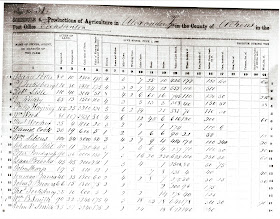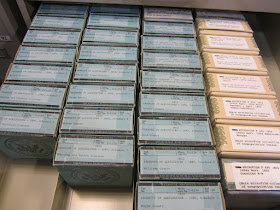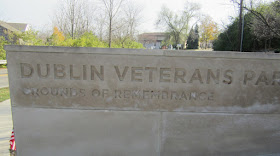Fall means football season in cities across America, and in Central Ohio, football means the Ohio State Buckeyes. And in that realm, there is no greater rivalry than the OSU-Michigan game, which traditionally ends the season each November. So what happens when you throw a wedding into the mix?
The story of my grandparents' wedding begins the year before, in the fall of 1934. With the country in the throes of the Great Depression, times were tough on the south side of Columbus. Wilma Steele’s family lived in a rented house in German Village, where her father worked in a glass factory. She had recently graduated from South High School and was working as a bookkeeper for White Castle, the first chain restaurant in the nation. Years later, she would recall:
Wilma Steele, 1935
|
“We would go to my Christian Endeavor meeting at South Church of Christ, and then sometimes go square dancing at Georgesville. I would meet him after he ushered and we would go to the midnight show and then to Clyde’s Diner… I had four brothers at that time and one sister. I would get so mad because my parents let them stay up late and we would have no privacy.”
Fred Herrel also lived in German Village, where his family made wood cabinets for commercial refrigerators. He was a couple of years older than Wilma, and had also graduated from South High, although they never dated in school. He, too, was living in a house full of brothers—three of them—and working two jobs didn’t leave him much spare time.
By fall 1935, Wilma turned 19 and Freddy was 21. They had been dating for a year, and were old enough in the eyes of the law to do what they wanted. And they wanted to get married. But weddings require money and parental approval, both of which were in short supply. So on November 23, 1935, Wilma and Fred eloped to Circleville, about 25 miles away. That day happened to be the day of the OSU-Michigan game, which was being played in Ann Arbor and broadcast on Columbus area radio stations. They didn’t pick the day with the game in mind, but the two events would be forever linked for them.
Wilma remembered, “We got married at the parsonage of the Methodist church in Circleville. That day was one of the most exciting Saturdays of my life. The minister was listening to the OSU football game and shut it off only long enough for us to say ‘I DO!’”
The newlyweds had a whole city to rejoice with. The Buckeyes beat the Wolverines 38-0, thereby tying Minnesota for the 1935 Big Ten conference title.
Fred & Wilma Herrel on their wedding day
|
Foregoing a honeymoon, the new Mr. and Mrs. Frederick Herrel quietly returned to their jobs and their own families. They kept their marriage a secret for six months, until they could get things in order for a life together. “We bought furniture and rented an apartment at 1486 Hunter Ave., and then announced our marriage in March 1936,” Wilma recalled. “Our dream for the future was to get a home of our own.”
Wilma and Fred went on to celebrate 66 anniversaries and follow the Buckeyes through 66 more matchups against Michigan. They were devoted fans the rest of their lives, and rarely missed a game on radio or TV. But none was more exciting than the one on their big day in November 1935.
Go Bucks!
|
Sources:
Personal history and quotations: Grandmother’s Book (New York: Dellwood Books, 1984), filled out by Wilma Steele Herrel and presented to the author, Christmas 1989.
Ohio State football history: “1935 Ohio State Buckeyes Football Team,” Wikipedia (www.wikipedia.com: accessed 31 October 2011).
Originally published at A Sense of Family on
November 1, 2011. Copyright 2011 Shelley Bishop.





















